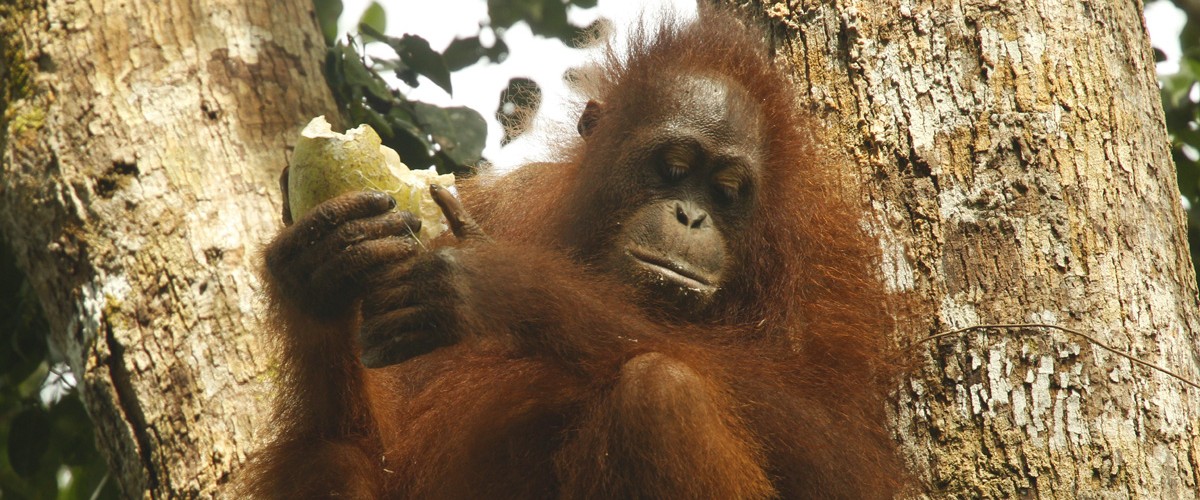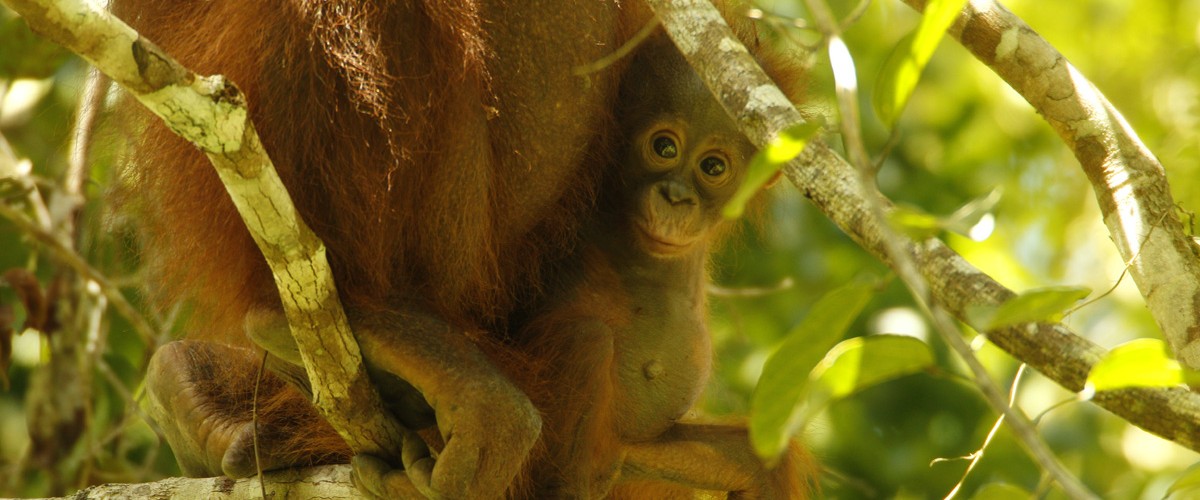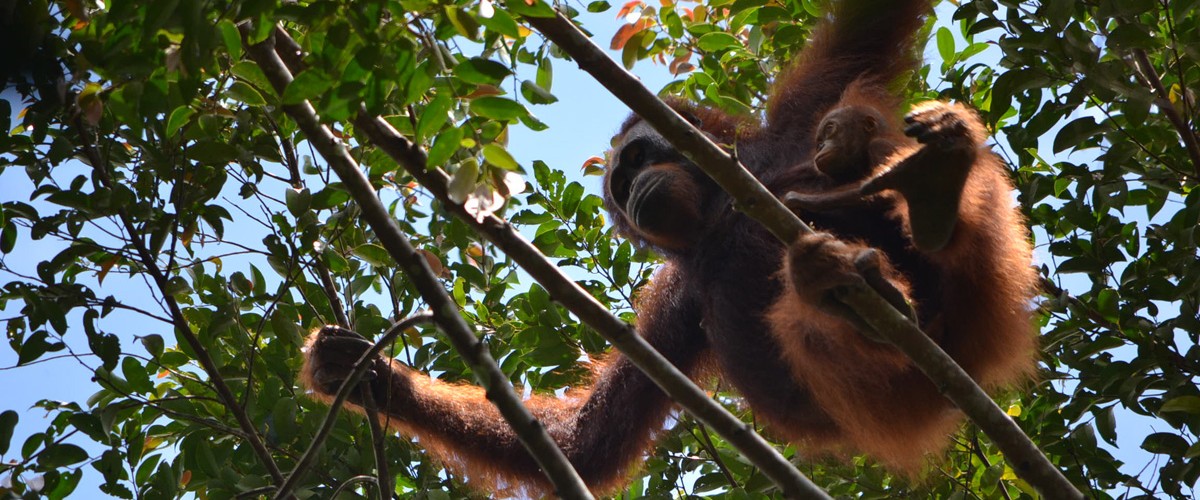By Erina Safitri, Student Researcher
Hello. I am Erina Safitri, a senior student at the Faculty of Forestry, Tanjungpura University (UNTAN), Pontianak. I am also a West Bornean Orangutan Caring Scholarship (WBOCS) recipient. I really like the forest. At university I’ve learned many things about forests and their components. As part of WBOCS we are taught about loving the environment and building a spirit of conservation within us. For me, the forest is a pleasant, quiet place.

Now, I’m conducting research at the Cabang Panti Research Station (CPRS) in Gunung Palung National Park. My research is on the identification and nutritional analysis of insects eaten by Bornean orangutans. As WBOCS students, we are required to take on research topics related to orangutans. From the results of my discussions with Wahyu Susanto (Research Director) and Mariamah Achmad (former Environmental Education Manager), I was interested in conducting research on the insects eaten by orangutans in Gunung Palung, as this has been studied less than orangutan plant consumption. This research is being conducted for 3 months, from June to September.

The first time I set foot in CPRS, I felt it was very extraordinary. It’s a research station in the middle of the forest, with a simple but very elegant building style. There is clear and cold river water, lots of beautiful fish, cool air, and people who are very kind. It’s so peaceful. I love Cabang Panti!
Starting to adapt to a new environment is not something that is easy for me. I worried about introducing myself and remembering the names and faces of new people. Everyone at CPRS turned out to be very pleasant, open, and like family. We often share stories, eat together, sing happily, and joke around. I feel lucky to be able to learn many things here.
Now entering the second month of my research, I have obtained 7 samples of insects eaten by orangutans, and all of them are termites. When orangutans begin to eat termites, I spread out a plastic sheet below the tree to catch fallen material and collect any insects in small containers. These samples will first be identified and nutritional analysis will be carried out after successfully collecting samples weighing at least 20 grams. Nutritional analysis will be carried out at the Food Technology and Agricultural Products Laboratory of the Pontianak State Polytechnic.

At CPRS, the Field Assistants are always kind and help me in the process of collecting data and samples. I also like to help collect samples of orangutan feces. Everyone here is great. I am very motivated by the people around me who always want to learn. I am very grateful! I would also like to thank the Gunung Palung National Park Office for assisting in my SIMAKSI permit process, and for accompanying me while I’m at Cabang Panti. I’d also like to thank all of my professors and mentors at UNTAN and the staff at Yayasan Palung who have helped me throughout this process.
Management of Cabang Panti Research Station is conducted by the Gunung Palung National Park Office (BTN-GP) in collaboration with GPOCP/YP. Scientific research is carried out in conjunction with the Universitas Nasional (UNAS) and Boston University.









